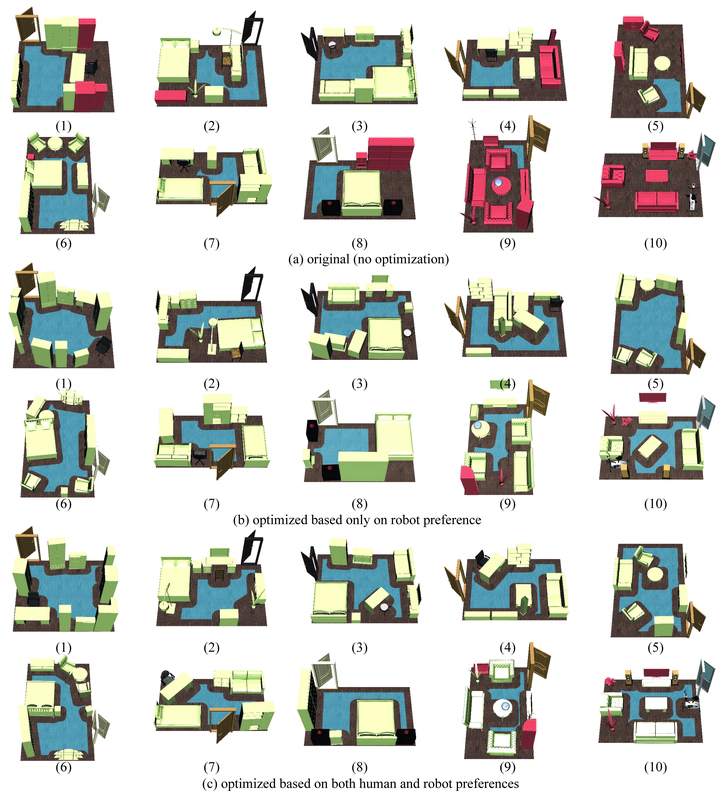
Abstract
We present an optimization-based framework for rearranging indoor furniture to accommodate human-robot co-activities better. The rearrangement aims to afford sufficient accessible space for robot activities without compromising everyday human activities. To retain human activities, our algorithm preserves the functional relations among furniture by integrating spatial and semantic co-occurrence extracted from SUNCG and ConceptNet, respectively. By defining the robot’s accessible space by the amount of open space it can traverse and the number of objects it can reach, we formulate the rearrangement for human-robot co-activity as an optimization problem, solved by adaptive simulated annealing (ASA) and covariance matrix adaptation evolution strategy (CMA-ES). Our experiments on the SUNCG dataset quantitatively show that rearranged scenes provide an average of 14% more accessible space and 30% more objects to interact with. The quality of rearranged scenes is qualitatively validated by a human study, indicating the efficacy of the proposed strategy.